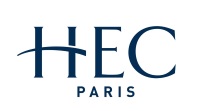No 995: 'Serving Two Masters' and the Chief Audit Executive's Communication: Experimental Evidence About Internal Auditors’ Judgments
Florian Hoos (), Natalia Kochetova-Kozloski () and Anne D'Arcy ()
Abstract: The position of an internal audit function as a “servant of two masters” (i.e. management and the audit committee) may lead to a conflict of priorities. In this setting, the tone at the top set by the Chief Audit Executive (CAE) plays a critical role in balancing the potentially competing preferences of management and the audit committee. We examine whether the emphasis in the CAE’s communication with internal auditors influences their judgments. We also test whether such influence is more pronounced in an internal audit task where potential for justification created through task complexity and ambiguity is high, as compared to low. We test two hypotheses in a mixed experimental design with the communicated preferences of the CAE to subordinates (cost reduction vs. effectiveness of internal controls) as a between-subjects factor, and levels of opportunity for justification (low, medium, high) manipulated within subjects. Findings suggest that the emphasis in the CAE’s message can bias internal auditors’ judgments, and such influence is more pronounced when the opportunity for justification is high, resulting in the elimination of a significantly greater number of internal controls and the design of less effective processes.
Keywords: corporate governance; internal audit function; effectiveness; internal controls
38 pages, July 28, 2013
Full text files
papers.cfm?abstract_id=2302269
Questions (including download problems) about the papers in this series should be directed to Antoine Haldemann ()
Report other problems with accessing this service to Sune Karlsson ().
RePEc:ebg:heccah:0995This page generated on 2025-06-10 11:14:55.

